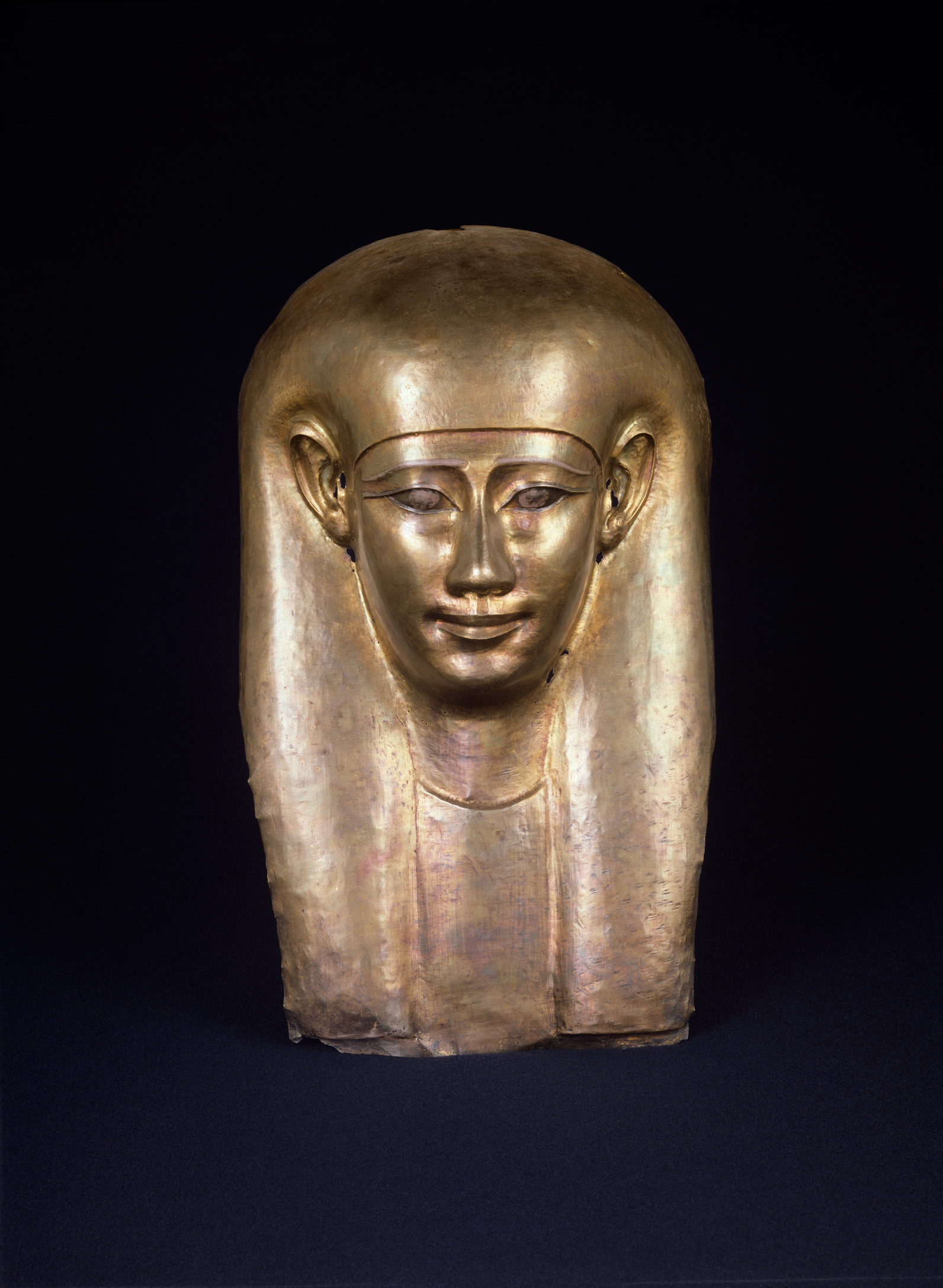
- Egypt, Late Period, 30th Dynasty (664–525 BC)
- Gilded silver
- Inv. 62
Funerary mask
This gilded silver funerary mask shows the idealised face of the deceased, whose name has been lost. Funerary masks rarely portray the face of the deceased, but instead aimed to create an image with gentle lines and an expressive gaze that demonstrated a good physical and spiritual state of health and an absolute confidence that the deceased would attain eternity.
Although the piece has none of the floral decoration or traces of any inscription that are customarily found in this type of funerary equipment, it does feature outstanding detail in its accurate depiction of the face. The slightly raised corners of his harmonious mouth help enliven the smile on his face. His hair, created in high relief, starts from the middle of his forehead, runs over his ears and falls onto his chest, surrounding his face, which has gentle features and traces of brownish polychrome on the eyebrows and eyes. The piece reveals fine technical work on the metal, managing to create a thin surface with a maximum of two millimetres and showing excellent repoussé work.
Most known funerary masks – as found in several museums in Europe and the USA, as well in Egypt – are made of cartonnage, and many were gilded, sometimes also showing blue painted hair, suggesting fine colouring using lapis-lazuli.
John Maxwell Collection. Acquired by Calouste Gulbenkian through Howard Carter at the sale of the John Maxwell Collection, Sotheby's, London, 12 June 1928.
H. 43.5 cm
Araújo 2006
Luís Manuel de Araújo, Egyptian Art. Calouste Gulbenkian Collection. Lisbon: Calouste Gulbenkian Museum, 2006, pp. 130–1, cat. 32.